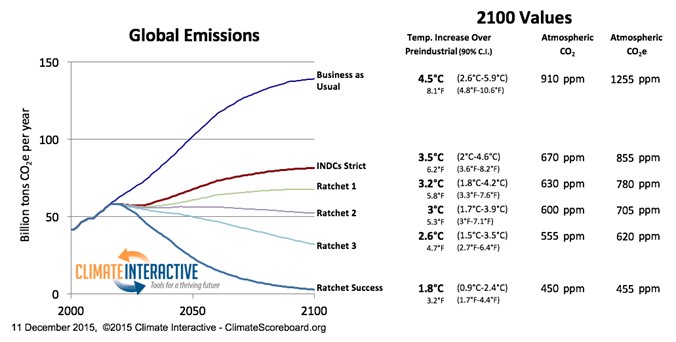of Pertamina Refinery Carbon Capture
and Utilization
FEATURED PAPER
By Bonifacius Raditya Yudha Atmaja, CCP
Jakarta, Indonesia
Abstract
Indonesia’s Government has agreed to support CO2 emission reduction below 1,683 MTon CO2e in 2030, according to the National Determined Contribution (NDC). There are many ways to achieve the following target, CCUS (Carbon Capture Utilization & Storage) is one of them. With this kind of technology, Carbon is captured to reduce emissions and carbon utilization to improve the economic value. This study aims to analyze the Life Cycle Cost of Carbon Capture Utilization & Storage technology applied to the Pertamina Refinery. Furthermore, the most economical Carbon capturing and utilization method will be selected.
The method used in this study includes the life cycle cost analysis of several CO2 capture technology such as chemical absorption, physical absorption, and oxyfuel combustion, along with the utilization technology in particular for Methanol production, Enhanced Oil Recovery, and Greenhouses. Subsequently, Multi-Attribute Decision Making will be utilized to determine the best technology arrangement. In conclusion, this study has shown that utilizing CO2 captured with physical absorption technology for the greenhouse is the most economical option.
Keywords: Life Cycle Cost, Pertamina Refinery Unit, Carbon Capture & Utilization, Carbon Emission, Net-Zero Emission, Indonesia Carbon Tax Regulation
Introduction
“There is a growing concern about global warming and its impact on people and the ecosystem they depend on. Temperatures have already risen 1.40F since the start of the 20th century”1. “Average global surface temperatures will likely rise by an additional 2.0-11.50F (1.1-6.40C) by 2100. Most of the observed increase in global average temperatures is likely due to the increase in anthropogenic greenhouse gas concentrations”2. Several greenhouse gases warm the planet, such as carbon dioxide, methane, nitrous oxide, ozone, and halocarbons. “Among these emissions, carbon dioxide (CO2) is the critical anthropogenic greenhouse gas due to its abundance and ability to remain in the atmosphere for thousands of years”3. “The role of carbon dioxide in warming the earth’s surface was first proposed by Swedish scientist Svante Arrhenius more than 100 years ago, who suggested that changes in carbon dioxide might explain the large temperature variations over the past several hundred thousand years known as the ice age”1. Furthermore, “Greenhouse gases like carbon dioxide and methane absorb the infrared energy, re-emitting some of it back toward Earth and some of it out into space.”4

Figure 1 Total World CO2 Emission5
As per data in figure 1, the world’s total CO2 emission exceeds 35 billion tons at a time.
However, other literature has emerged that offers contradictory findings on the Green House Gas emission and the impact of CO2 on the earth. Some theories state that “the earth’s temperature is affected by many other factors. Among these are solar activity, the distribution of atmospheric water vapor and clouds, atmospheric and ocean circulation patterns, volcanic activity, and slow changes in the earth’s orbital parameters. Atmospheric CO2 also contributes to greenhouse warming but much less than H2O”6,7. Several studies also show that a warmer world will benefit human beings. “Global rewarming since the 18th century, plus better housing, sanitation, food and water supplies has greatly benefited human health and prosperity”8. “Despite warming from 1964 to 1998, a 74.4% decline in heat-related mortality in 28 of the largest U.S. cities is found. They estimated that another 1⁰C increase would reduce the net mortality rate”9. In addition, another reference also states that “CO2 levels need to be elevated to more than eight times the current average ambient outdoor level of 407 ppmv (0.04%) to be harmless to humans and animals.”10
More…
To read entire paper, click here
Editor’s note: This paper was developed as part of A pre-qualification requirements to sit for the AACE Certified Cost Professional (CCP) exam under the tutelage of Dr. Paul D. Giammalvo, PT Mitrata Citragraha, Jakarta, Indonesia.
How to cite this paper: Atmaja, B. R. Y. (2022). A Life Cycle Cost Analysis of Pertamina Refinery Carbon Capture & Utilization; PM World Journal, Vol. XI, Issue XII, December. Available online at https://pmworldlibrary.net/wp-content/uploads/2022/12/pmwj124-Dec2022-Atmaja-Cost-Analysis-of-Pertamina-Refinery-Carbon-Capture.pdf
About the Author

Bonifacius Raditya Ydha Atmaja
Jakarta, Indonesia
![]()
Bonifacius Raditya Yudha Atmaja is a project engineer with seven years of experience in an oil and gas refinery and petrochemical development project. He is currently working as an engineer at the Indonesian national oil company. Having a strong interest in the energy industry (oil and gas) along with the spirit of the transition to green energy. Holding a bachelor’s degree in Mechanical Engineering from Bandung Institute of Technology and recently completed a Master’s Degree in Energy System Engineering with a focus on New & Sustainable Energy Development from the University of Indonesia. Moreover, he attended a distance learning mentoring course under the supervisory of Dr. Paul D. Giammalvo, CDT, CCE, MScPM, MRICS, GPM-m Senior Technical Advisor, PT Mitrata Citragraha, to attain Certified Cost Professional certification from AACE International.
Bonifacius lives in Jakarta, Indonesia, and can be contacted at bonifacius.atmaja@gmail.com.









